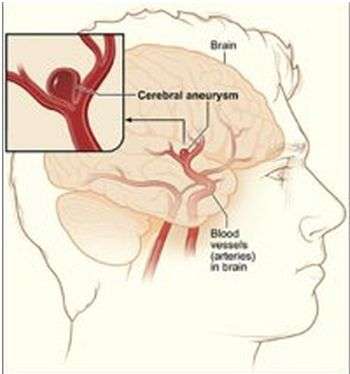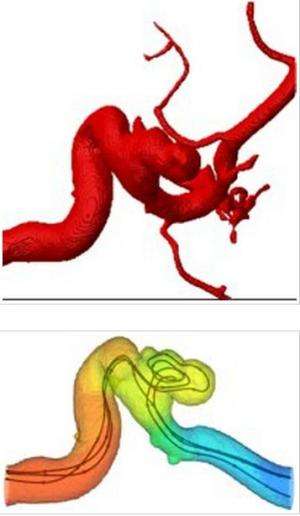Predicting aneurysms: Patient-specific information is a valuable asset in medical decision-making

Using new computer models of blood flow in the vicinity of cerebral aneurysms (dilated sections of blood vessels in the brain), it is now possible to calculate every detail of the patient-specific situation. This has resulted in powerful new techniques for predicting a further weakening or even rupture of the blood vessel's wall, and for effective intervention. Julia Mikhal was awarded a PhD on this topic by the University of Twente.
Brain aneurysms occur in about six percent of the population. They are dilated sections of blood vessels, which can deteriorate over time until the blood vessel wall ruptures, resulting in a haemorrhage. This causes a loss of mental functions and severe headaches. Haemorrhages of this kind can even be life threatening. The treatment of such patients involves complex medical decision-making. The models developed by Julia Mikhal can be of great use in this regard. She uses information obtained from brain scans, in combination with fluid dynamics models, to predict flows and forces in the affected part of the brain.
Patient specific
Using the immersed boundary method, Dr Mikhal can calculate fluid flows and the forces exerted on blood vessel walls. This allows her to perform generic model calculations and to obtain a detailed picture of individual patients' specific situations, as a function of space and time. Flow calculations reveal which parts of the vessel wall are at greater or lesser risk of further deterioration. Without such information, it is difficult to make accurate predictions about the future development of the aneurysm. One of the insights produced by these calculations is that the larger the aneurysm, the greater the fluctuations in flow behaviour. These fluctuations are probably a reliable measure of gradually increasing risk levels.

Julia Mikhal's work will enable the entire process to be automated, starting from the collection of a patient's medical data right through to the fluid-mechanical analysis of the flows and forces involved. This generates predictions that have a reliable margin of error, which greatly assists medical specialists in the process of decision making. The key factors in preventing the situation from worsening are speed, reliability, and a rational consideration of the alternatives.
Julia Mikhal conducted her research in Prof. Bernard Geurts' Multiscale Modelling and Simulation group. This group is attached to two University of Twente research institutes: the MIRA Institute for Biomedical Engineering and Technical Medicine, and the MESA+ Institute for Nanotechnology.
More information: Both an abstract and the full text of the PhD thesis, which is entitled "Modelling and simulation of flow in cerebral aneurysms," are available in digital format.














